What are the different materials for leather handbags?
For Premium Leather Handbag Customization, Choose JH. 18+ Years in Leather Bag OEM Manufacturing
For Premium Leather Handbag!
Customization, Choose JH.
18+ Yeairs in Leather Bag OEM Manufacturing
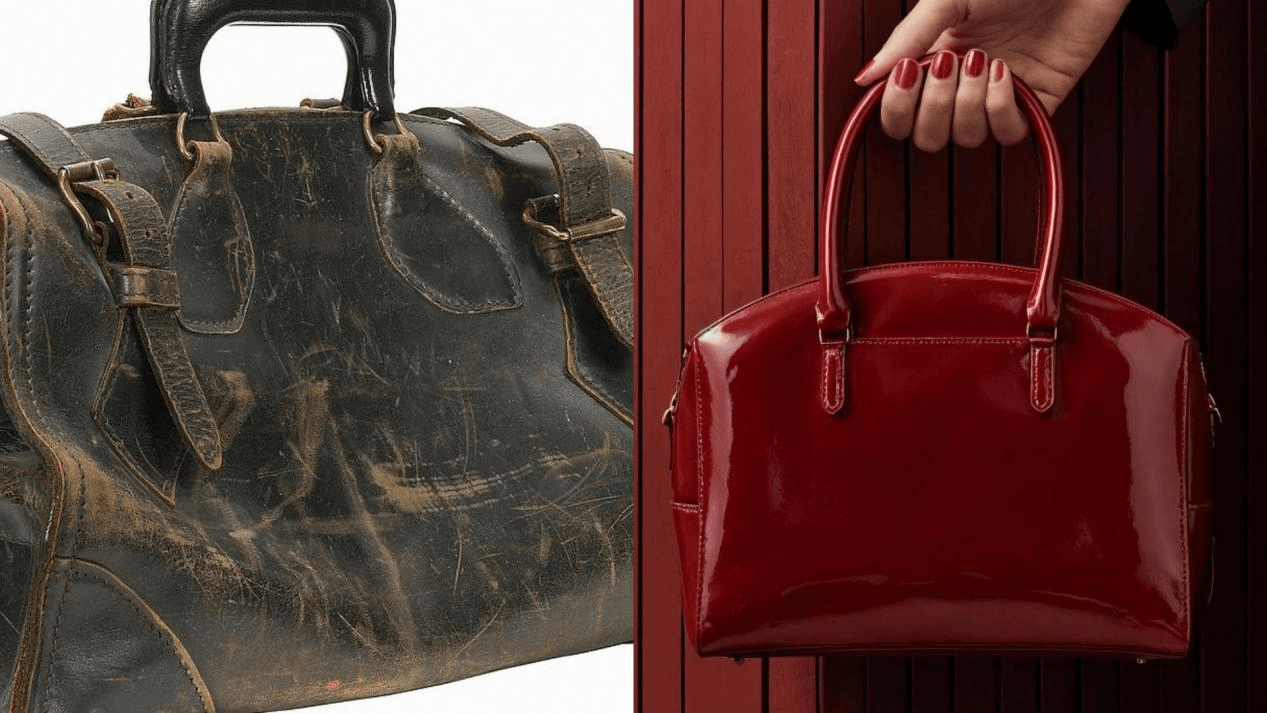
Leather handbags can last anywhere from a year to a lifetime. With proper care, a high-quality leather bag can be your lifelong companion. It depends on leather type, craftsmanship, and maintenance.
As the main material for handbags, leather comes in many different types, each with its own characteristics. The type of leather directly affects a product’s texture, durability, and how it feels to use. Because of this, the right way to care for leather bags depends on what kind of leather it is.
Cowhide is one of the most widely used leathers. Its fibers are dense and strong, making it durable and tear-resistant. We typically use top-grain cowhide, like in our full-grain leather bags, for the main body, handles, straps, and base of our handbags. After being processed, it becomes highly resistant to wear, fading, and deforming. It holds up well against everyday use and minor scratches and won’t easily lose its shape. The biggest issue with cowhide, however, is that it’s sensitive to water. If it gets wet, it can stain and become stiff, and with prolonged use, it might even crack. To keep it soft and shiny, you should regularly condition it with leather oil or cream. If it does get wet, wipe it down immediately with a dry cloth and let it air-dry in a cool, well-ventilated area.
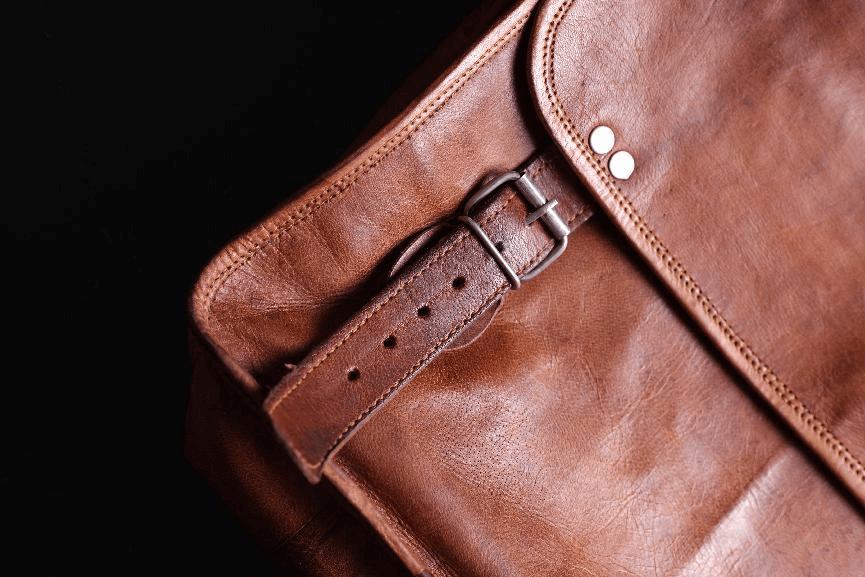
Sheepskin has fine, loosely arranged fibers, which make it incredibly soft and lightweight. It feels luxurious, whether used for the outer shell or as an interior lining. Unfortunately, sheepskin is also very delicate. It can easily be scratched or scuffed by sharp objects and is prone to absorbing stains. Because of this, you need to be extra careful with it and avoid rough surfaces and sharp items. When storing a sheepskin bag, it’s best to stuff it to help it keep its shape and then place it in a dust bag.
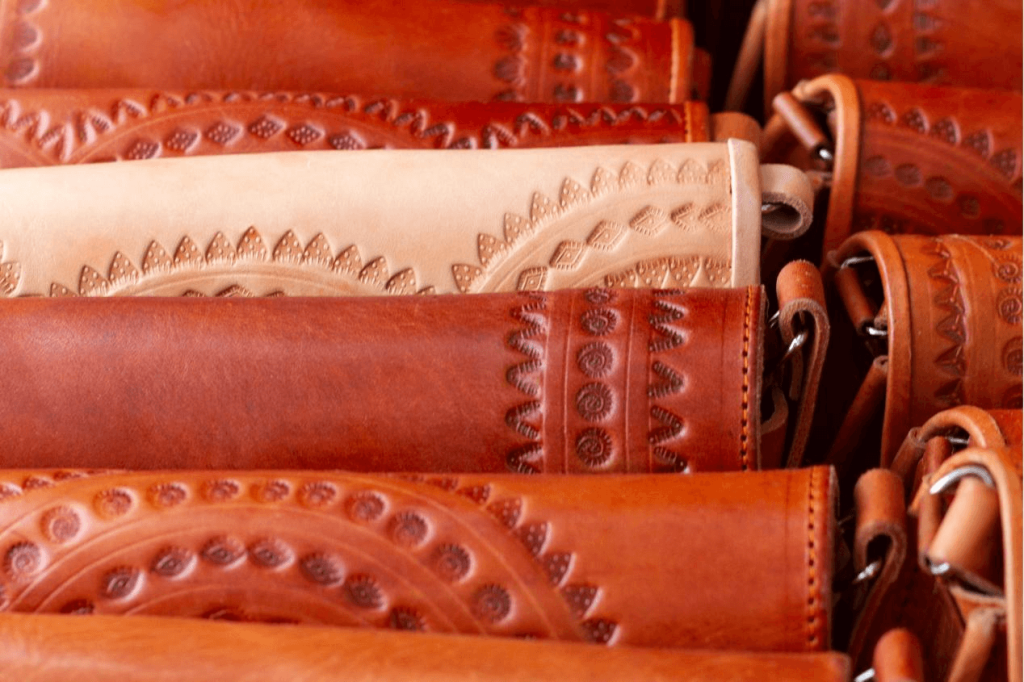
Pigskin has large pores and coarse fibers, so it isn’t as smooth or refined as cowhide or sheepskin. It also tends to collect dust and dirt, which is why it’s rarely used for the outer part of a bag. Instead, it’s often used as an inner lining. It’s a fantastic “behind-the-scenes” material because it’s breathable and somewhat durable. Using it as a lining helps protect the bag’s contents and adds a more luxurious feel than a standard fabric lining. All you need to do to keep it clean is wipe it down regularly with a damp cloth.
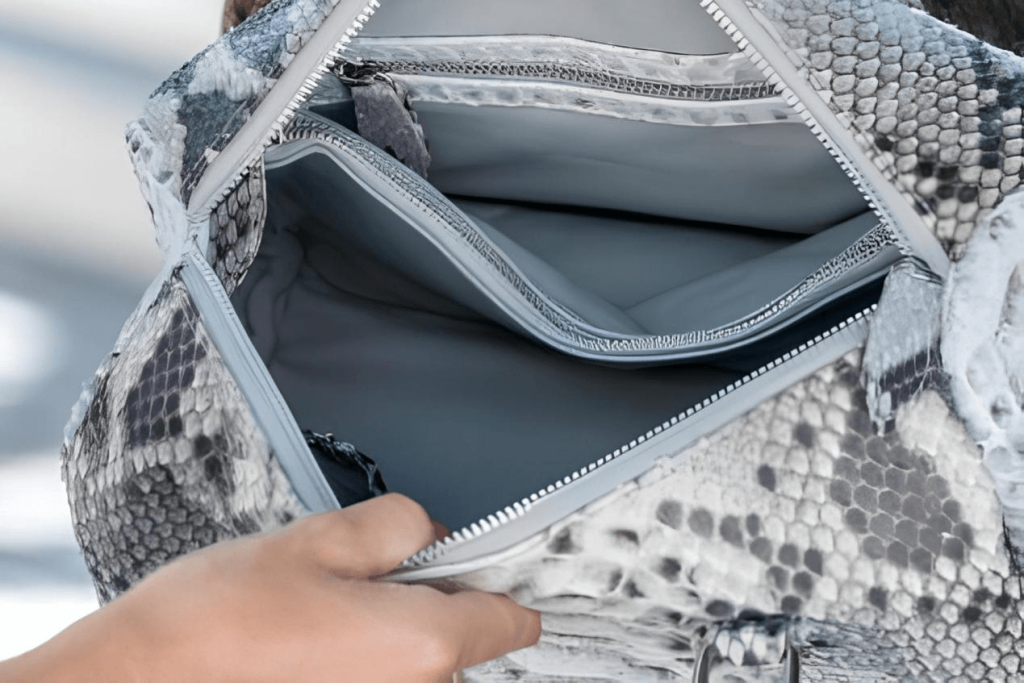
Horsehide has incredibly dense fibers, especially shell cordovan, which has a fantastic sheen and is very strong. It’s typically used for high-end, structured bags, like our Women’s Saddle Leather Bag. You’ll find that it’s the most durable of all common leathers, highly resistant to wear, and maintains its color and shape. However, just like with cowhide, it’s best to keep horsehide bags from getting wet. To prevent it from cracking and to enhance its luster, you should regularly apply a specialized leather conditioner.
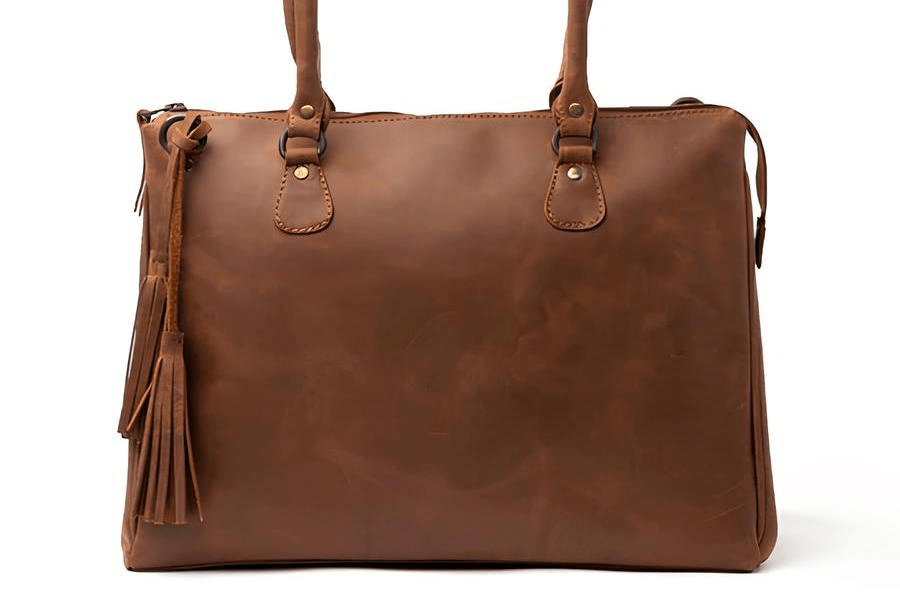
To better show the differences between these four materials, the table below compares four popular leathers used in bags, showing how their natural properties and proper care affect their lifespan and performance.
| Leather Type | Abrasion Resistance | Fade Resistance | Anti-Deformation Ability | Biggest Concern | Recommended Care | Longevity with Care |
| Cowhide | High, due to its tight, strong fibers. | High, but prolonged sun exposure can cause fading. | Strong, holds its shape well. | Cracking and water stains. | Regularly apply a leather conditioner to keep it moisturized. | 10-20+ years |
| Sheepskin | Low, its loose fibers make it very prone to scratches and wear. | Low, fades easily with extended sun exposure. | Weak, very soft and can easily lose its shape. | Scratches from sharp objects and stains. | Handle with extreme care and avoid contact with rough surfaces. | 5-10 years |
| Pigskin | Medium, offers decent durability. | Medium, color is relatively stable. | Medium, it’s more stable than sheepskin but not as firm as cowhide. | Accumulation of dust and dirt. | Regularly wipe with a damp cloth to keep it clean. | 5-10 years |
| Horsehide | Extremely High, especially Shell Cordovan, due to its exceptionally dense fibers. | Extremely High, color is very stable. | Extremely High, excellent at maintaining its shape. | Cracking if left unconditioned. | Regularly apply a specialized leather conditioner to maintain moisture and shine. | 20-40+ years |
Every step in the bag-making process is crucial, and together they determine a bag’s final quality and durability. From a simple piece of leather to a finished bag, these key techniques have a direct impact on how long your bag will last.
Leather fibers have a natural grain, much like the grain of wood. Cutting along the direction of these fibers maximizes the leather’s natural strength, which helps prevent the bag from deforming or tearing when it’s under stress. Our expert artisans are like cartographers, carefully studying the grain of each piece of leather to strategically cut and use the strongest sections—like the dense fibers from the back and rump—for high-stress areas like handles and straps. If the direction of the cut is wrong, these areas can easily stretch or break after long-term use.
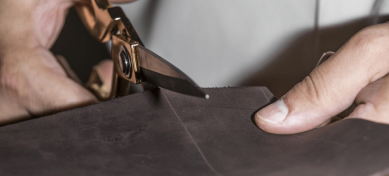
Stitching is one of a bag’s most common weaknesses. Quality stitching uses strong, rot-resistant nylon or polyester thread with the right stitch density. The most common method is the machine lock stitch, which is fast and efficient. But it has a major flaw: if a single stitch breaks, the whole seam can unravel quickly. That’s why for our high-end leather handbags, we use the same hand-sewn saddle stitch technique as top luxury brands like Hermès and Louis Vuitton. With this method, two needles pass through the same hole, creating an interlocking “X” shape with every stitch. This technique is incredibly strong. Even if a thread breaks, the rest of the seam stays secure and won’t come apart.
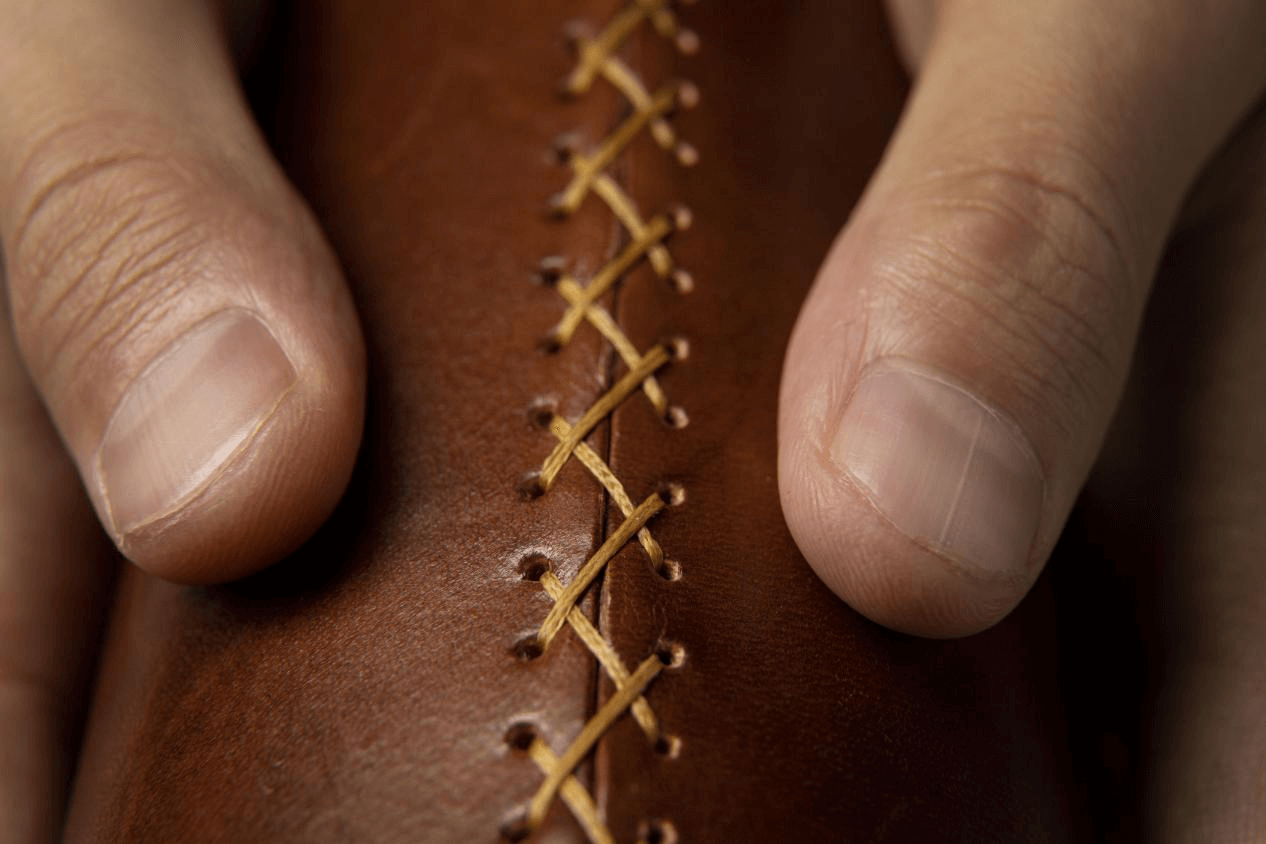
basic foam or stuffing and don’t properly bond the lining to the outer shell. This can cause a bag to quickly lose its shape and even collapse after use. However, a good structuring process can significantly improve a bag’s durability. It makes it resistant to pressure and deformation, protects the items inside and reduces wear on the leather. This greatly extends its life.
We add materials like thermoplastic, hard non-woven fabric, or a special type of cardboard between the outer leather and the inner lining. These materials help the bag keep its shape, effectively resist external pressure and deformation caused by items inside, and prevent irreversible wrinkles and sagging in the leather.
For the areas that get the most wear, like the base and corners of a bag, we add thicker padding or hard boards to prevent the bottom from collapsing and the corners from wearing down. This is one of the key details that determines how long a bag will last.
For some highly structured bags, our artisans use a heat-pressing technique to tightly bond the leather and the padding together, creating a stable, integrated structure. This process helps the bag hold its shape much longer, even when it’s fully packed.
Common hardware on leather handbags includes zippers, rivets, and buckles. The durability of a bag is directly affected by low-quality materials and poor installation. Our leather handbags, on the other hand, use solid brass or stainless steel. Both of these metals are highly corrosion-resistant and won’t rust or oxidize, so they’ll stay shiny for years.
We also use solid rivets that go right through the leather and are secured on the back, creating a structure that’s almost impossible to pull apart. For high-stress points like handles and strap buckles, this method ensures they won’t come off, even when the bag is heavy. When installing rivets and screws, we also add metal washers or reinforcing plates under the lining. This distributes the stress over a larger area, which keeps the hardware from tearing through the leather over time.
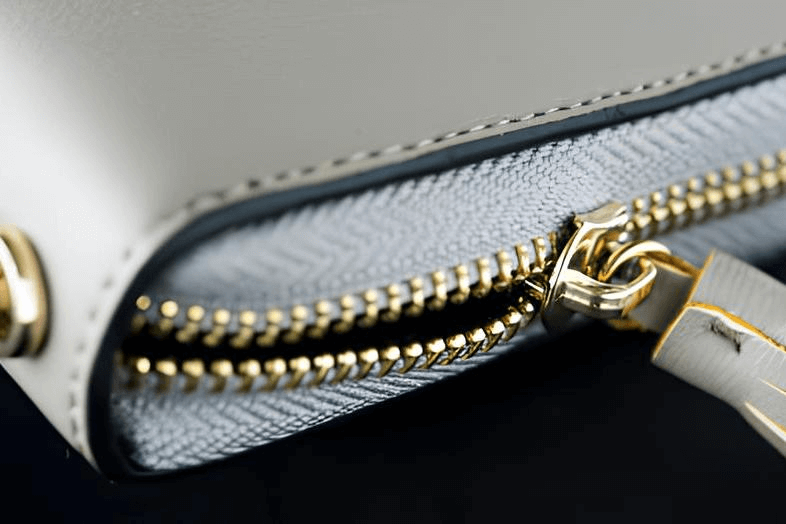
Surface finishing is the final step in making a bag, and it determines how well the bag holds up against daily use. A good finish not only protects the leather but also makes colors more vibrant, keeps the shine longer, and prevents the color from wearing off or peeling over time.
For a daily commuter bag, we’d use coated leather, which has a layer of pigment and a polymer coating. For an evening bag, we’d go with aniline or semi-aniline leather, which are colored with transparent or semi-transparent dyes and have no thick coating. This allows you to see the leather’s natural pores and texture. And for a vintage-style bag, we’d use pull-up leather, which is steeped in special waxes and oils during the tanning process. When you press on it, the color lightens, giving it a classic, retro look.
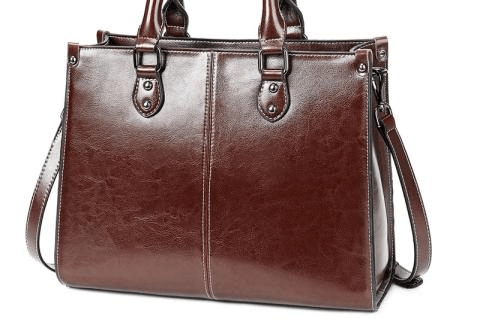
Understanding the materials a leather handbag is made from, from the dense durability of cowhide to the soft luxury of sheepskin, helps you know exactly how to care for it. But the real secret to a bag’s longevity lies in the details you often can’t see: expert cutting, strong stitching, careful design, and sturdy hardware. This is what Junhao handbag factory has always focused on—creating genuine leather bag brands just for you. Contact us today.
Have a project in mind? Looking for a reliable partner for custom leather bag manufacturing? Get in touch with us today! Our team is ready to discuss your needs and bring your ideas to life with expert craftsmanship and premium materials